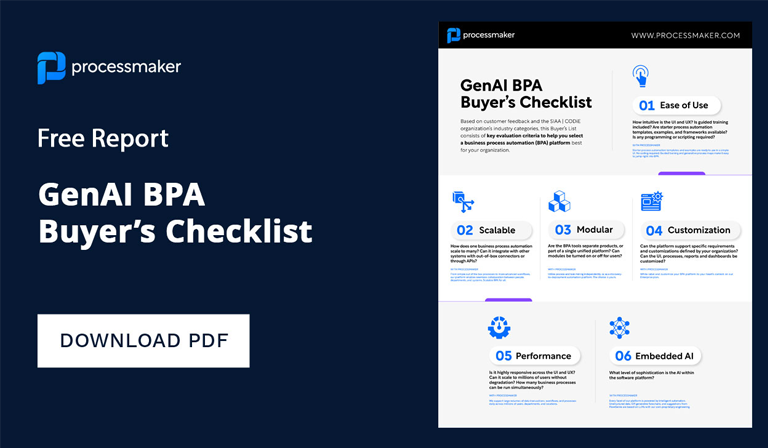Banks face tough competition, disconnecting workflows, and erroneous reporting. Due to that fact, intelligent automation has recently been the key focus of the global banking industry as banks hope to hit the next wave of productivity, cost savings, and improvement in customer experiences. In this article, we will describe key ways banks are improving efficiency by utilizing intelligent automation.
What is intelligent automation?
Intelligent automation is defined as: “…the combination of Artificial intelligence (AI) and Robotic Process Automation (RPA) systems which senses and synthesizes vast amounts of information and streamlines entire processes, their workflows (applications ranging from routine to the revolutionary), learning to adapt as it goes to achieve unprecedented levels of efficiency, quality, and making complex decisions faster.”
Applications of intelligent automation include broad activities that generate large amounts of data, like fraud screening or sales forecasting. Business process management (BPM) software is the basis of most current process automation activities. BPM enables organizations to model processes and use computers to orchestrate these processes by directing workflows according to set process models.
FinTech Intelligent Automation Use Cases
According to a financial research firm, “In [the] US alone, 2.5 million financial services employees are exposed to AI technologies in front, middle and back-office; 1.2 million working in banking and lending, 460,000 in investment management, and 865,000 in insurance.” There are many ways that financial institutions can benefit from intelligent automation. For one, it simplifies complicated workflows that cause bottlenecks and slow customer service. Intelligent automation also reduces process re-work by enabling predictability that streamlines the hand-off process. It improves work quality, enhances efficiencies and speeds up time to market. Below we’ll detail how intelligent automation helps the front, mid, and back office in banking.
Front Office
Front office roles are dedicated to generating revenue for banks. Common automation in banking includes conversations driven by chatbots and voice assistants. With algorithms and interfaces that integrate with financial data and account actions, automatic chatbots can hold life-like conversations with consumers. Bank of America has a virtual assistant, Erica, that serves 25 million of its banking customers. Using voice commands, BofA customers can instruct Erica to give account balances, transfer money, check their credit score, and schedule meetings with real reps at financial centers, among other tasks. Additionally using biometrics, intelligent automation can allow a bank to authenticate sign-on or a mobile payment using a fingerprint, voice recognition, or face recognition.
Middle Office
The middle office usually consists of risk management and compliance. Banks have a high level of responsibility to protect customer information and prevent financial crime. Middle offices are at the forefront of regulation, standards, and compliance. Intelligent automation can perform real-time regulatory checks for KYC/AML on all transactions, rather than relying on traditional methods which only batch processes a small sample of customers to analyze. One Dutch bank failed to meet regulations and was fined $900 million for failing to spot an obvious money-laundering scheme that AI would have caught. One such use case is Regtech or regulation technology. Regtech refers to software applications that help financial institutions meet an increasingly complex array of oversight commitments while adding transparency. But either way, a human will always have to investigate flags from AML/Fraud. This also requires (by regulation) a standardized process.
Back Office
The back office is mostly referred to as operations. Artificial intelligence can also help banks in the back office by reducing the need for antiquated paper-driven processes and manual tasks. By automating these time-consuming tasks, employees can focus on more value-added work. For example, according to Mckinsey: “IT-enabling operations encompasses both automating processes (preventing customers from using paper, digitizing workflows, and automating or supporting decision making) and using IT solutions to manage residual operations that must be carried out manually (for example, using software for resource planning). By taking full advantage of this approach, banks can often generate an improvement of more than 50 percent in productivity and customer service.”
Conclusion
While automation has obvious benefits for automating certain tasks for the banking industry, it is not the perfect solution. Intelligent automation processes are built to react to specific events and lack reasoning capabilities. It is not a one-size-fits-all solution as banking processes can be event-based or repetitive with disparate data exchange. In order to take advantage of intelligent automation, banks need to assess their processes and workflows to see if they are compatible with their current business process management system. In cases where BPM and intelligent automation make financial sense for banks, they can be a powerful combination to transform front, middle, and back offices.





